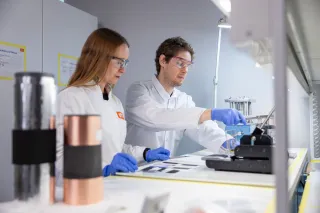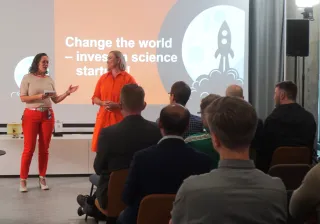Alongside drastic emission reductions, carbon dioxide removal technologies and practices are needed to keep the Paris Agreement climate target within reach. This is concluded in an extensive multidisciplinary research project involving top European universities and research institutes. According to the project coordinator at VTT Technical Research Centre of Finland, emission reductions and carbon dioxide removal cannot be seen as alternatives — action is required on all fronts.
Carbon dioxide removals have been the subject of lively public debate recently. The European Commission has communicated that drastic emission reductions must be supplemented with land-based and industrial carbon removals by 2040 to keep on track with the climate neutrality target by 2050. For the past four years, the multidisciplinary NEGEM research project has focused on responsible carbon dioxide removal options, their potentials, as well as social and environmental impacts.
"Removing carbon dioxide from the atmosphere is needed for keeping the warming at 1.5°C. At the same time, we must significantly accelerate our efforts to reduce emissions. Therefore, carbon removal is not an alternative to emission reductions, but a necessary supplementary measure," says Kati Koponen, VTT's Senior Scientist and coordinator of the project.
Concrete methods for carbon dioxide removal under examination
The NEGEM project investigates several different technologies and practices for removing carbon dioxide from the atmosphere: afforestation and reforestation, capture of carbon dioxide released during bioenergy production and storing it in geologic formations (BECCS), biochar production, capture of carbon dioxide directly from ambient air and storing it in geologic formations (DACCS), soil carbon sequestration, enhanced weathering, and ocean alkalinisation.
Each method has positive and negative impacts on the surrounding nature and society. Industrial carbon removals such as BECCS and DACCS offer a solution for permanent carbon storage, but they are currently more expensive and further away from large-scale deployment than, for example, re-/afforestation, which are ready-to-use methods. However, carbon stored in forests can be released quickly, for instance, during a forest fire or logging.
On the other hand, increasing natural carbon sinks by reforestation or soil carbon sequestration, also has a positive impact on biodiversity, recreational value, and nature's ability to adapt to climate change. It can also help meet international nature restoration targets.
"Responsible carbon dioxide removal takes into account the advantages and disadvantages of each method. It is important to use a portfolio of methods to balance the trade-offs and to ensure cost-efficiency. Therefore, all methods will most likely need to be used simultaneously," Koponen explains.
The research project involves a total of 16 European universities, research institutes, NGOs, and companies. The project is coordinated by the VTT Technical Research Centre of Finland.
International cooperation is a key for successful removals
According to Koponen, the required scale of carbon dioxide removal and its impacts are not yet fully understood. Large-scale international cooperation is also necessary for the transport and storage of carbon dioxide, as many countries don’t have their own geological formations suitable for carbon dioxide storage. There is also a demand for mutually agreed-upon science-based monitoring practices and regulations.
While carbon dioxide removal increases costs, it also creates economic opportunities for the European countries.
"If we must remove gigatonnes of carbon from the atmosphere, it will require numerous plants and large-scale infrastructure for transport and storage. Carbon dioxide removal may become an entire industry, creating jobs and export potential for pioneers. Nations, companies and the EU have to plan their carbon dioxide removal efforts now, while at the same time focusing on drastic emission reductions,” Koponen says.
Download the final report of the NEGEM research project here.





